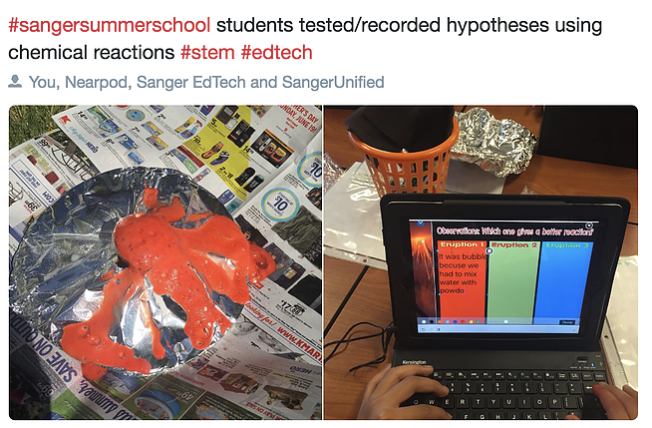
Collaborative planning conversations gave rise to a new direction for our elementary summer school program – a vision to unite multiple schools in a project based learning environment around a single theme. I had the privilege of joining a group of three other principals, with the support of district administration, to craft a dynamic learning experience that would meet the needs of both struggling students chosen by their teachers to be in need of intervention, as well as students selected via a competitive lottery to attend dual immersion Spanish language enrichment camp. Both programs would take place simultaneously on single campuses and would bring together students from multiple feeder sites.

Our first challenges in implementing STEM/PBL into our summer program came during the planning process itself. Google hangout sessions, google docs, and google sheets allowed us to conduct virtual meetings, collaboratively create curriculum resource guides for teachers, and gather student data to drive instructional planning.

We involved teachers in this process as early as possible, in order to create ownership for the work and to provide individualized support as they began their instructional plans. This initial work was more complex and time consuming than if we had given teachers a specific program to implement. Instead, we empowered educators with choice and valued their professional expertise, asking them to design learning experiences that addressed listening, speaking, reading, writing, and math, unified around the districtwide theme of natural disasters. Because we shared our resources districtwide via a google doc, collaborative efforts eased this planning process. A key component of the success of the program was teachers leading each other. As teachers were being asked to design learning rather than follow a prescribed program, we as administrators felt the need to check in with them during the planning process, to provide support as needed. In doing so, we were pleased to see natural leaders emerge. These natural leaders guided and coached our new teachers in implementing STEM/PBL in their classrooms.

While the planning for this new approach to summer school/Spanish language enrichment camp was more complex and time consuming than in the past, the benefits for students was phenomenal. Discipline problems were nearly non-existent and the district received zero complaints from parents or teachers regarding this past year’s programs. Why is this? I believe the success of the program is due to the relevancy and high engagement levels of the STEM/PBL activities. Students who struggle to read, write, and conduct math problems were motivated by dynamic content and hands on activities. The following photos demonstrate a sampling of the engaging work done by students in both the summer school intervention and Spanish language camp enrichment programs.








